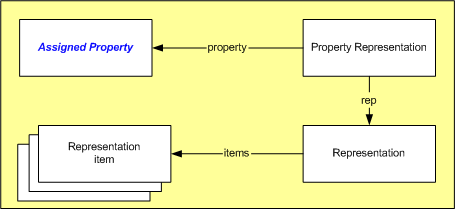
| Capability (C056):— representing_evolution_of_property_values | Date: 2007/06/22 12:22:10 Revision: 1.23 |
This section provides a business level overview of this capability.
An evolving property, is a property that may change over time. The property is associated with an individual physical item, for example a serially numbered part, that is considered to have a persistent existence but whose characteristics may change over time.
EXAMPLE
This section provides an overview of the information model that supports this capability.
A property is a qualitative or quantitative characteristic that something may possess.
In AP239, there are three types of property assignment (C076: assigning_product_properties, C077: assigning_process_properties, and C078: assigning_resource_properties), but all properties that change can be represented using this capability.

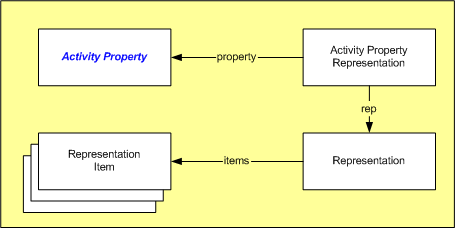
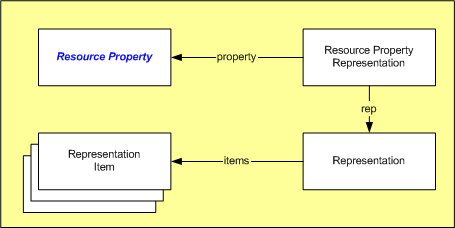
The representation of time dependence of properties is the same for all cases.
The information required to represent the evolution of property values is summarized in the EXPRESS-G diagram in Figure 4 below and described in the following sections.
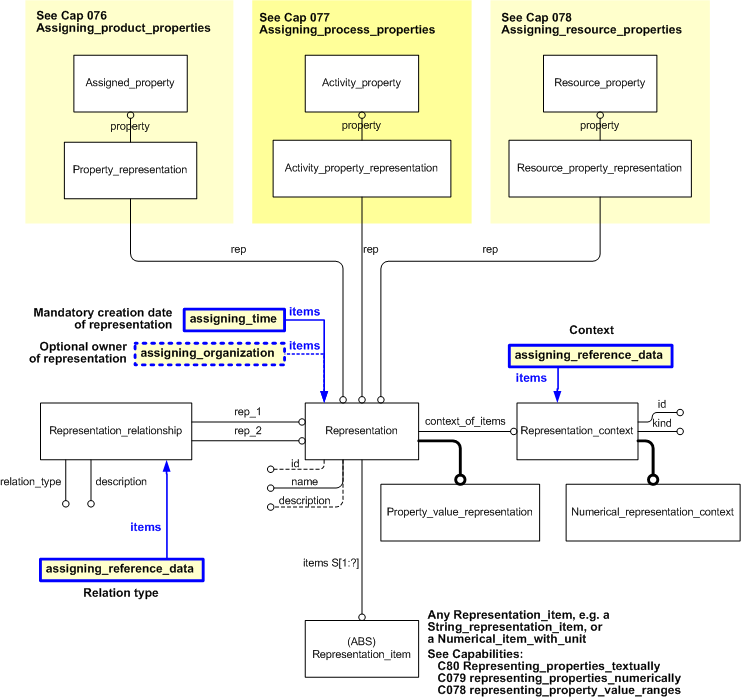
This can be represented in templates as follows:
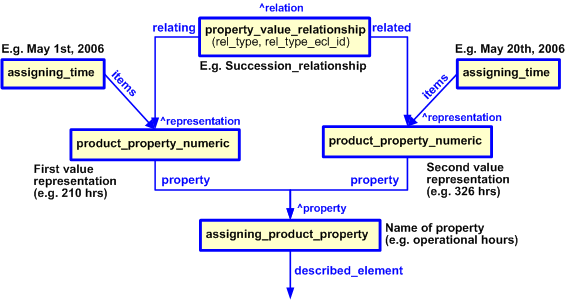
The methods of this capability are valid regardless of the nature of the property, and regardless of the object it describes.
A property value at a given point in time is represented by an instance of Representation and corresponding instance of either a Property_representation, Activity_property_representation, or Resource_property_representation with and associated Property_value_representation instance to represent the value.
The time at which the property value was recorded is represented by using the template assigning_time to assign a time to the property value, namely Property_value_representation. The organization that recorded the property value can be optionally assigned to the property value using assigning_organization.
The fact that the properties have values that evolve over time is represented by classifying
the
Property_representation,
Activity_property_representation,
or Resource_property_representation.
as [Time_dependent]![]() Error RDL1: The class Time_dependent does not exist in RDL at URI urn:plcs:rdl:std. Check the dexlib/data/refdata/rdl_index.xml
Error RDL1: The class Time_dependent does not exist in RDL at URI urn:plcs:rdl:std. Check the dexlib/data/refdata/rdl_index.xml
.
If the property has a series of values recorded over time, then there are a set of Property_value_representations associated with the property. If explicit sequencing information is required, then an instance of Representation_relationship should be used to relate two values (Property_value_representations) recorded in sequence. The Representation_relationship is defined by the template property_value_relationship. The meaning or role of the relationship is provided by classifying the Representation_relationship by a "Succession relationship" (urn:plcs:rdl:std:Succession relationship).
Representation_context is used to indicate whether numbers may meaningfully appear together in a numerical expression. Thus in a time series of discrete property values it is usually meaningful to compare numbers, find differences, and get statistics. Hence, all instances of Representation should always be associated with the same instance of Representation_context.
A property that changes over time is illustrated in Figure 6.
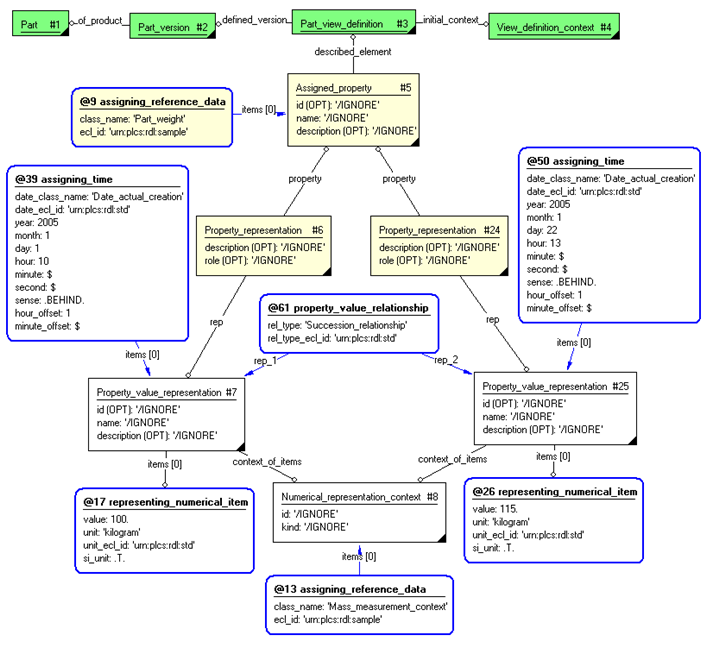
The following sections define a set of templates for the capability, where a template is a specification of a set of entities that need to be instantiated to represent a given set of information.
This section specifies the template property_value_relationship.
NOTE An explanation of a template and the associated instantiation path is provided in the Template overview section.
This template describes how to establish a relationship between property value representations.
NOTE In any exchange file, a class name should only be represented by a single instance of External_class.
This has been raised as issue, RBN-1, against ISO 10303-239. The EXPRESS schema has been modified in DEXlib (Long form: dexlib/data/schemas/ap239_arm_lf.exp, short form: dexlib/data/schemas/ap239_arm_sf.exp). These changes will be made to ISO 10303-239 as a Technical Corrigendum at some stage.
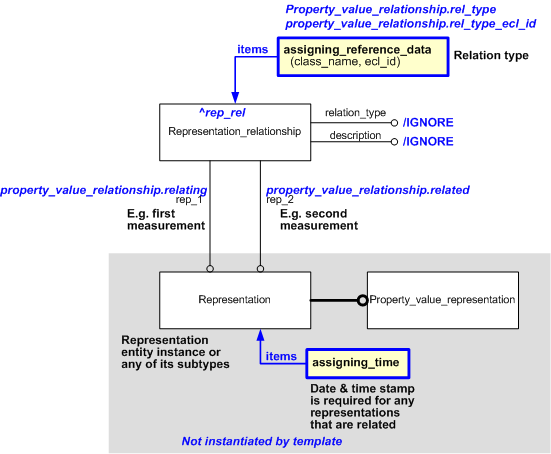

target
is the parameter to which the
Representation_relationship
is bound.
| Entity in path | Value | Inherited from |
| Representation_relationship.relation_type | '/IGNORE' | — |
| Representation_relationship.description | '/IGNORE' | — |
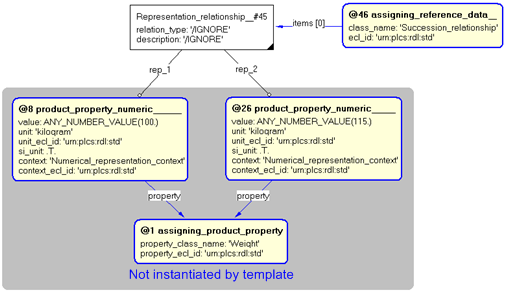
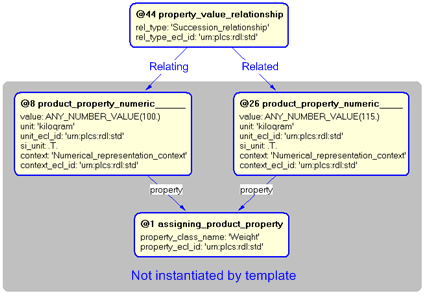
This capability "Representing evolution of property values" is related to the following capabilities:
This capability "Representing evolution of property values" is dependent on the following capabilities:
The following classes of reference data are required for this capability:
© OASIS 2010 — All rights reserved